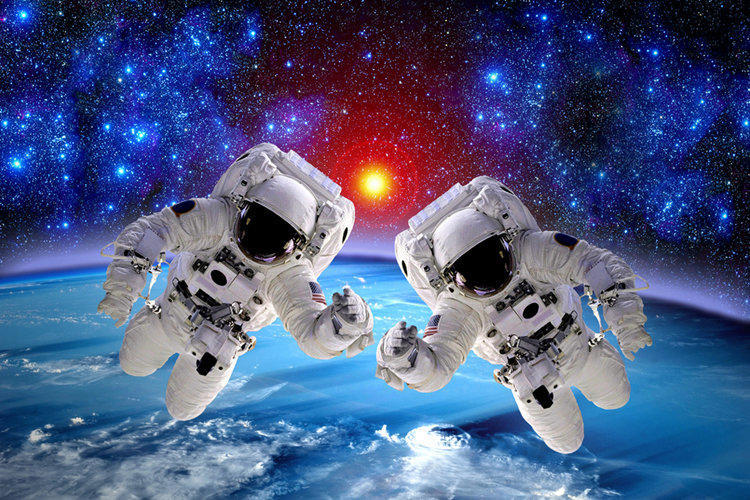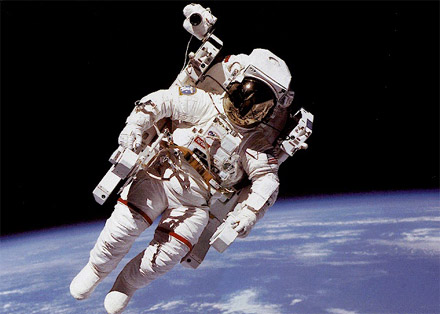How many people are in space right now
How many people are in space right now
Сколько людей сейчас в космосе – вопрос, ответ на который сегодня может получить любой интересующийся

Уточнить, как у них дела, конечно, не получится, а вот увидеть их имена, изучить биографию или узнать точно, сколько людей сейчас в космосе — совсем не сложно.
Как узнать, сколько человек сейчас в космосе?
Разработчики простого и доступного ресурса How Many People Are in the Space Right Now ведут постоянный учет и знают, сколько человек сейчас в космосе. Узнать информацию обычному жителю не составит особого труда, достаточно иметь доступ в Интернет, телефон или ПК. Информация четко отслеживается и собирается уже несколько лет подряд. Кроме списка космонавтов на ресурсе указано количество дней, которые провел в полёте каждый член экипажа. Там же представлены ссылки на личные профили на сайтах космических агентств.
Интересно! На момент написания данной статьи в небесном пространстве находятся бортинженеры с последовательной продолжительностью (в днях):
Больше всех находится американский инженер NASA Кристина Кох, 14 марта она отправилась на МКС в качестве бортинженера в экспедиции 59, 60 и 61. Они с 18.10.2019 года совместно с Джессикой Меир стали первыми женщинами, которые приняли участие в женском космическом походе.
Американец Эндрю Морган, как и итальянец Лука Пармитано, провел 168 дней, выполняя полетную задачу на международной космической станции. Пармитано – самый молодой астронавт, который совершил длительную миссию в возрасте 36 лет.
В любое время суток можете обновить информацию и проверить наличие людей за пределами Земли, которые выполняют свою работу. Существует также платное приложение для IOS, которое может присылать уведомление об изменении количества космонавтов.
Сколько людей из России пребывает сейчас в космосе
Сколько людей в космосе находится из Российской Федерации, также можете узнать с помощью интернет-ресурса. В данный момент находятся такие российские космонавты:
Александр Александрович — пилот ВВС первого класса, имеет два длительных полета на борту МКС, со временем стал командующим.
Олегу Ивановичу в 2011 году было присвоено звание Героя РФ и летчика-космонавта, находится на борту с 25.09.2019 г.
Представителей Российской Федерации на данный момент двое, что является вторым результатом после представителей США, и может выступать хорошим началом в развитии космических исследований.
Почему нужно знать количество людей в космосе прямо сейчас?
Конечно, такая информация не является жизненно важной и необходимой, но все же позволяет приблизиться к загадочному миру. Ведь мы говорим не о роботе, а о реальном человеке, который, как и многие другие на Земле, выполняет свою работу.
Память о великих космонавтах, таких, как Юрий Гагарин, останется у нас надолго. Может мы еще не знаем, но среди современных ученых уже могут быть великие люди, которые внесут значительный вклад в систему космических наук.
Сколько людей в космосе прямо сейчас – уникальная программа, позволяющая заглянуть за пределы орбиты.
С развитием современных технологий по изучению космоса большое количество населения желает посмотреть на Землю из космоса, конечно в иллюминатор смогут заглянуть только единицы. Для того чтобы приблизиться к неизведанному, не обязательно лететь в другой мир, с помощью установленных камер на международной космической станции можно легко узнать информацию. Две технологические камеры ведут постоянную прямую онлайн трансляцию.
How many people are in space right now?
The International Space Station is designed to always be crewed by cosmonauts and astronauts. For this reason, women and men have been living and working in space constantly since the first Expedition mission in the year 2000. So how many people are in space right now?
There are currently 14 people in space right now.
International Space Station
Soyuz MS-21
SpaceX’s Crew-3
SpaceX’s Crew-4
These crewmembers will form the final crew of ISS Expedition 67 and once SpaceX’s Crew-3 leaves will start Expedition 68. The crew will have a full slate of experiments and spacewalks to continue the mission of low Earth orbit research.
Tiangong Space Station
Updated June 13, 2022
Who was the first person in space?
Yuri Gagarin became the first person in space when he was 27 years old. He conducted a 108-minute orbital flight around Earth inside his Vostok 1 spacecraft on April 12, 1961.
Who was the first American in space?
Alan Shepard became the first American in space at the age of 37. He launched inside his Freedom 7 capsule from a Mercury Redstone rocket on May 5, 1961.
Who was the first woman in space?
Valentina Tereshkova became the first woman in space when she was 26 years old. She spent nearly three days in space while orbiting the planet 48 times inside her Vostok 6 spacecraft on June 16, 1963.
Who was the first American woman in space?
Sally Ride became the first American woman in space at the age of 32. She flew on the Space Shuttle Challenger for NASA’s STS-7 mission on June 18, 1983.
Who was the first person on the Moon?
Neil Armstrong became the first person to walk on the Moon when he was 38 years old. He flew in his Apollo capsule that launched on a Saturn V rocket before stepping foot on the Moon during the Apollo 11 mission on July 20, 1969.
Who was the first woman on the Moon?
No woman has had the opportunity to travel to the Moon yet. America’s space agency sent 12 men to walk on the Moon between 1969 and 1972 through the Apollo program. The U.S. did not allow women to apply to be astronauts until 1978.
NASA plans to send the first woman to the Moon through the Artemis program with the Space Launch System (SLS) rocket and Orion spacecraft. Artemis 1 is expected to take flight in late 2021 or early 2022.
Artemis 2 is a flyby mission around the Moon much like Apollo 8. The second Artemis mission will have a four-person crew (three Americans and one Canadian astronaut). NASA has not yet committed to including a female astronaut for Artemis 2, although the mission is the space agency’s next opportunity to send a woman around the Moon.
Artemis 3 is the first lunar landing mission under the program. The program currently commits to sending the first woman and next man to the Moon. Kathy Lueders, NASA’s associate administrator of human exploration and operations, has expressed interest in sending two women to walk on the Moon for the mission.
NASA has not named which astronauts will crew Artemis 2 and Artemis 3 yet. The space agency has named a group of 18 astronauts who will be eligible for early Moon missions. Currently, half of the Artemis astronauts named are women.
Next people to go to space
The next crewed launch will either be SpaceX’s Crew-5 or Russia’s Soyuz MS-22 in September. MS-22 will be another full crew of Russian cosmonauts but Crew-5 is expected to have two NASA astronauts, Koichi Wakata from JAXA, and supposedly the first Russian cosmonaut to fly on a SpaceX Crew Dragon.
Current launch date: September 2022
Recent space travelers
Axiom-1
Featured Image Credit: Glery Canas for Space Explored
Enjoy reading Space Explored?
Help others find us by following on Apple News and Google News. Be sure to check us out on YouTube, Twitter, Facebook, and Instagram, join our Discord!
Who’s in Space Right Now?
It’s easy to forget that, right now, there are humans in space. The advent of the continuously-crewed International Space Station has made this routine, but it still blows my mind that, as of this writing, six people are in space. If you’re curious about who’s in space, or where they are, here are some resources to help you keep tabs on our spacefaring friends.
1. How Many People are in Space Right Now?
A single-serving website, howmanypeopleareinspacerightnow.com gives you the answer, which is currently six. It also lists the specifics below, ranking crew members by their number of days in space, and links to profile pages on their space agencies’ sites.
The site also has an app for iOS, with various added features, including push notifications when the number changes. The website is free; the app isn’t.
2. Current Position of the ISS
If you’re curious where the ISS is (and as of this writing, it’s the only craft hosting humans in space), the ISS AstroViewer has you covered. It shows a live view of what the ISS would see, looking straight down at the earth, plus a track view showing the projected track of the station in its orbit (along with day/night bands).
An extra-cool feature is the Observation page, which helps you figure out times when the ISS will be overhead (or at least visible), along with relative brightness.
See also: Spot the Station, which can text you when the station approaches!
3. Live ISS View on UStream
Live, streaming ISS video! Of course, when I first tuned in, I got a blue screen. NASA explains (emphasis added):
Live video from the International Space Station includes internal views when the crew is on-duty and Earth views at other times. The video is accompanied by audio of conversations between the crew and Mission Control. This video is only available when the space station is in contact with the ground. During «loss of signal» periods, viewers will see a blue screen. Since the station orbits the Earth once every 90 minutes, it experiences a sunrise or a sunset about every 45 minutes. When the station is in darkness, external camera video may appear black, but can sometimes provide spectacular views of lightning or city lights below.
Go check out what’s on, or just stream some NASA TV instead.
4. SpaceX on Livestream
If you want to keep track of SpaceX launches and other events, they have a LiveStream channel. If you subscribe, the app can notify you when an event is coming up!
5. Use IFTTT to Be Notified About Launches
The If This Then That (IFTTT) app allows you to create all sorts of simple programmatic workflows, known as «recipes.» My favorite is a recipe that notifies you when an astronaut enters space! (There’s also one for when astronauts leave space.)
IFTTT is free, and works on a wide variety of devices and operating systems. Learn more about IFTTT if you haven’t used it before.
How Many People Are In Space Right Now?
I like websites that perform one function well. This website answers the question of how many people are in space at any given moment and where (on the International Space Station, aboard the Space Shuttle, etc.) Link
Tags: Space, People, Space Shuttle, Space Station
Newest 5 Comments
Yeah, it’s been 3 days since Endeavour launched, and 24 hours since it docked at the ISS, and this still reads 6, not 12.
So, as a example of «a webpage that performs one function well». well. what is that one thing, gives out inaccurate info?
Assuming there is some automation to this (if it’s pulling the number off NASA’s website), next Monday the 23rd Soyuz TMA-20 will be landing, so even if it can’t keep track of the shuttle astronauts, that 6 should change to 3.
Then 3 more will be going up in June 7 on Soyuz TMA-02M, bringing the number back to 6.
For the record, back in 2008 I started this blog with a similar idea:
Because, even with NASA’s website, and wikipedia, I found it surprisingly time-consuming to glean Just.Who.The.Heck.Was.Up.There.RIGHT.NOW. You could find crew manifests for various Space Station Expeditions, but sometimes they’d list people who’d landed a month ago, or weren’t going up for another couple of months.
Of course, entropy set in, and I sort of forgot about the blog in 2009 and 2010. But I’m updating it now.
So presumably it’ll change next Monday (when the 3 depart on the Soyuz), but it doesn’t keep track of the guests (shuttle astronauts) on the ISS right now.
Once some of these private space ventures get off the ground, they’ll be whizzing around up there like softballs.
How Many People Have Been In Space?
— asks Gail
Joshua J Romero • March 26, 2007
A U.S. astronaut flying high in space. [CREDIT: NASA]
Exploring Mars: Astronaut Versus Astrobot
Adam T. Hadhazy • July 30, 2008
Phoenix lander goes quiet as India shoots the Moon
Adam T. Hadhazy • November 13, 2008
Cosmic Cancer
Carina Storrs • January 28, 2009
As you go further and further from the surface of the earth, the atmosphere gradually fades until it’s difficult to notice any air around you. No physical boundary clearly separates space from the atmosphere – even thousands of miles away from the planet, a few air molecules zoom around. As a result, it’s difficult to put a precise total on the number of travelers who have tasted space.
The line distinguishing spaceflight from ordinary flight evolved from the efforts of Theodore Von Karman, a Hungarian-American physicist and engineer, in the 1950’s. In ordinary flight, an aircraft relies on the atmosphere to create lift. Without air, the wings of an airplane and the helium or hot air of a balloon are useless.
Von Karman knew that as the earth’s atmosphere became thinner and thinner, an airplane would have to fly faster and faster to generate the same lift, because there is less air for the aircraft to push against. At some critical height, the plane would need to travel so fast to generate lift that its motion would be more like a satellite, which orbits the earth in perpetual free-fall — without additional thrust or lift — due to the earth’s gravity.
After consulting several experts, Von Karman found that this height was very close to 100 kilometers above the ground (62.1 miles), and it became known as the Karman Line. According to the list of human space travelers on Wikipedia, 448 people have traveled above the line. The Fédération Aéronautique Internationale (FAI), an international group that maintains records in flight and spaceflight, accepted the Karman Line, as did most of the rest of the world, but the U.S. Air Force did not.
Before Karman’s line, the American flying forces had already established a less demanding distinction between space and the atmosphere: 50, not 62.1, miles. This height lies near the upper boundary of the mesosphere, the layer of atmosphere that turns falling debris into shooting stars known as meteors. Any pilot in the U.S. military who travels above 50 miles in altitude earns an astronaut badge, in recognition of space travel. According to the Wikipedia list, 454 people have passed this threshold. That total, however, does not include six pilots listed at Spaceline.org who earned their astronaut badges for flying X-15 jets more than 50 miles high.
While opportunities for space travel continue to increase, it won’t be cheap anytime soon. If you want to add your name to the list, start saving now.



